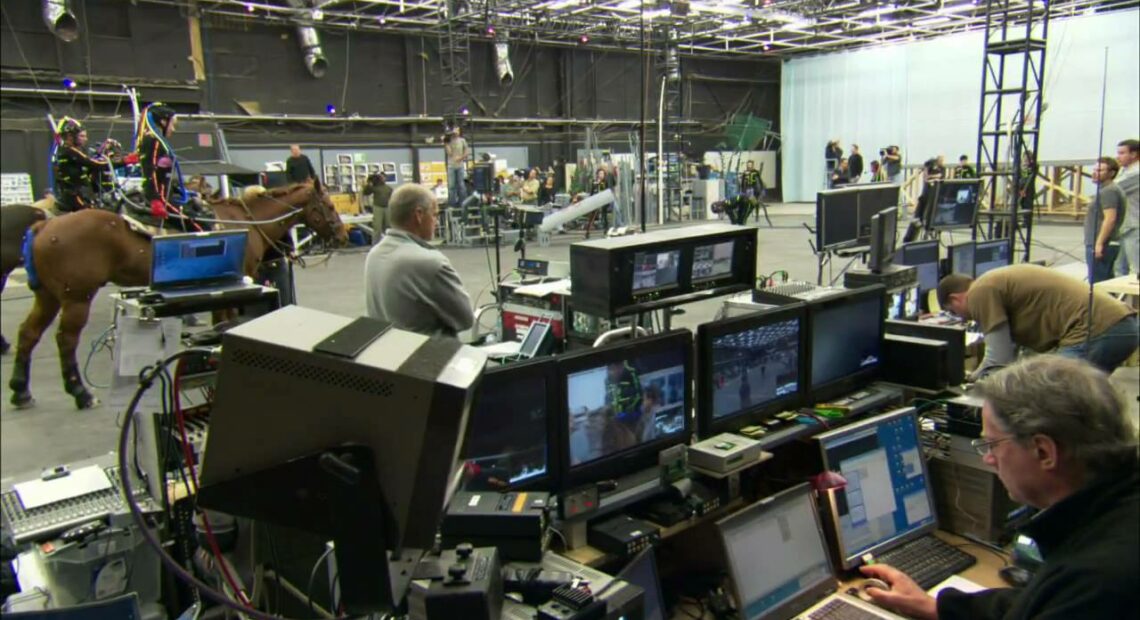7 Times New Technology Was Created to Make a Film

The film industry has always been at the forefront of technological advancements, constantly pushing boundaries to create immersive and visually stunning experiences for audiences. Throughout history, filmmakers have developed groundbreaking technologies to enhance storytelling and bring their visions to life. In this blog post, we will explore seven instances when new technology was created specifically for film production, revolutionizing the way movies are made.
- Technicolor: One of the earliest and most significant advancements in filmmaking technology was the development of Technicolor. Introduced in the 1930s, Technicolor revolutionized the way movies were seen by introducing vibrant and lifelike colors to the screen. Films like “The Wizard of Oz” and “Gone with the Wind” became iconic examples of Technicolor’s impact on the industry, setting a new standard for visual storytelling.
- Steadicam: The Steadicam, invented by Garrett Brown in the 1970s, brought a new level of stability and fluidity to camera movements. It allowed filmmakers to achieve smooth and steady shots while maintaining mobility, enabling creative and dynamic camerawork. Stanley Kubrick’s “The Shining” and Martin Scorsese’s “Goodfellas” are just a few examples of films that utilized the Steadicam to create iconic tracking shots.
- CGI (Computer-Generated Imagery): The advent of computer-generated imagery (CGI) revolutionized the film industry in the 1990s. CGI allows filmmakers to create realistic and fantastical visual effects that were previously impossible or too costly to achieve practically. The groundbreaking film “Jurassic Park” showcased the immense potential of CGI, bringing dinosaurs to life in a way that captivated audiences and paved the way for future advancements in visual effects.
- Bullet Time: “Bullet Time” is a visual effect technique pioneered by “The Matrix” franchise. Using an array of still cameras positioned around the subject, filmmakers were able to create a frozen-in-time effect while the camera moved around the scene. This groundbreaking technique became an iconic visual signature of the films and has since been widely adopted in various other movies, commercials, and even video games.
- Motion Capture: Motion capture (MoCap) technology allows filmmakers to capture the movements of actors and translate them into realistic digital characters. The film “Avatar” pushed the boundaries of motion capture by using advanced techniques to create the alien characters and their expressive performances. Since then, motion capture has become an essential tool in films like “Planet of the Apes” and “The Lord of the Rings” trilogy, enabling seamless integration of live-action performances with digital characters.
- Virtual Reality (VR): Virtual reality has made its mark in the film industry, providing audiences with immersive and interactive experiences. Filmmakers have embraced VR technology to create 360-degree films, allowing viewers to explore and engage with the narrative in a more immersive way. “Carne y Arena” by Alejandro G. Iñárritu, which premiered at the Cannes Film Festival, is a notable example of a VR film that pushes the boundaries of storytelling and empathy.
- Deepfake Technology: Deepfake technology combines artificial intelligence with video manipulation to create convincing yet fake videos. While often associated with controversial uses, deepfake technology has also found its place in the film industry. Filmmakers can use deepfake technology to de-age actors, resurrect deceased performers, or recreate historical figures. For instance, in “Rogue One: A Star Wars Story,” Peter Cushing’s character, Grand Moff Tarkin, was digitally resurrected using deepfake technology to achieve a seamless integration of the character in the story.
The film industry has continuously embraced new technologies to enhance storytelling and create captivating visual experiences for audiences. From Technicolor and Steadicam to CGI, motion capture, virtual reality, bullet time, and deepfake technology, each advancement has pushed the boundaries of what is possible in filmmaking. As technology continues to evolve, we can expect filmmakers to explore even more innovative techniques to bring their visions to the silver screen.
Picture Courtesy: Google/Images are subject to copyright







